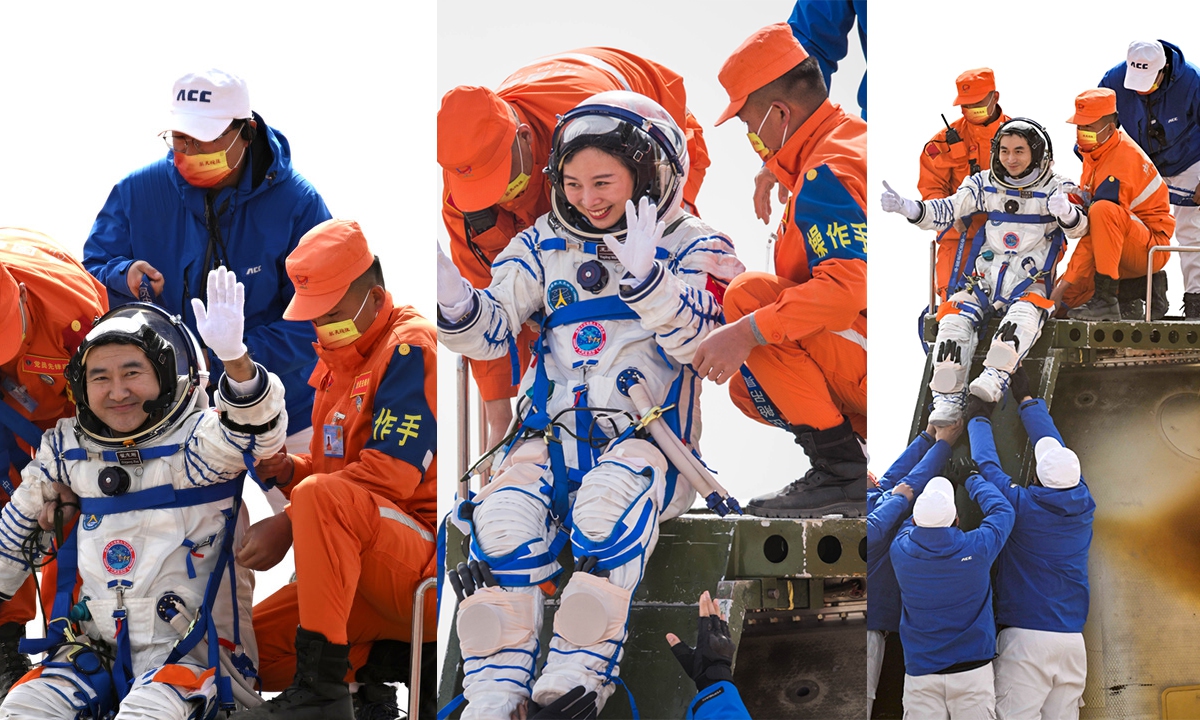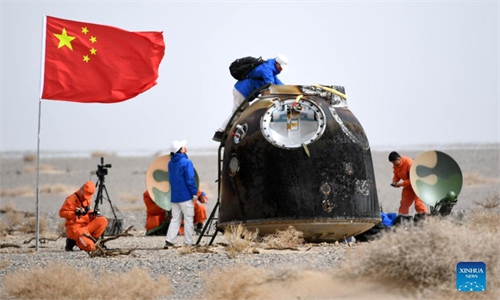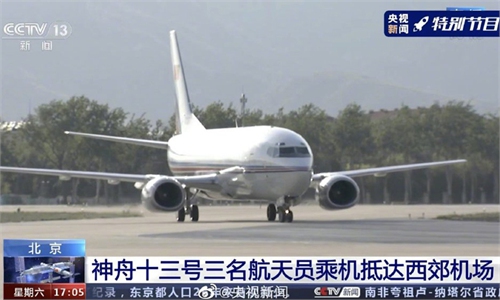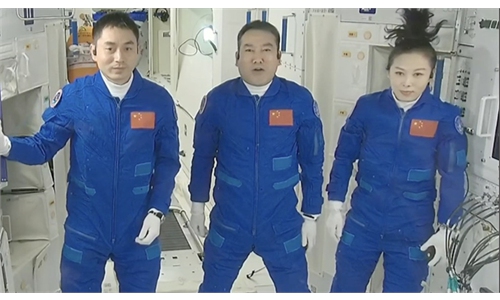
Photo: Xinhua
China's state-owned aerospace giant China Aerospace Science & Industry Corp (CASIC) revealed on Monday how its multiple advanced radar products helped achieve the rapid return of the Shenzhou-13 crew after their record-breaking six-month stay in the Tianhe space station.
Two radar products developed by CASIC carried out whole-stage measurement and monitoring services for the re-entry capsule after the craft carrying the three taikonauts entered Earth's atmosphere.
Developers at CASIC likened the radar services to a "measuring rod" for the ground controllers in the search and recovery mission for the Shenzhou-13 heroes.
One of the radars was a phased array radar and was used to track and monitor the return module in the "blackout period" on the craft's way to the ground. The other one played a key role after the capsule had deployed the main parachute.
As the return capsule entered the Earth's atmosphere, there was inevitably friction with the surrounding air, with a high-temperature and high-pressure ionized gas layer outside the craft that cut off communication with the ground controllers - this is known as the blackout period, CASIC developers explained.
The phased array radar's measuring and monitoring function provided solutions for the blackout period, and laid foundations for deciding on the landing point. It has previously assisted the return for 11 Shenzhou manned spacecraft missions, and the design was further improved for the Shenzhou-13 mission, they said.
The other radar project was used after the main parachute was deployed and helped to deal with the strong wind close to the ground.
According to the developers, the radar is capable of providing high-precision positioning for the return capsule, from deployment of the main parachute to touchdown, via passive positioning technology. It can work round the clock in an automatic fashion and constantly offer real-time data for the ground staff to help them forecast a landing point. It also offers useful information for the ground search and rescue teams.
The Shenzhou-13 crew safely returned to Earth after their epic six-month trip, which nearly doubled the previous record for China's longest single space mission of 92 days set by the Shenzhou-12. The crew landed only eight hours after the manned spacecraft's detachment from the Tianhe core module.
Before the Shenzhou-13 return mission, it normally took around a day for the return craft to get back to Earth. Compared to the return trip of the Shenzhou-12 mission which took approximately 28 hours, the Shenzhou-13's eight-hour rapid return maneuver marked a national first.
Apart from the two radar products, the 706 research institute of the CASIC Second Academy also created a search and rescue information system for the Shenzhou-13 return maneuver, developers revealed.
The Shenzhou-12 spacecraft flew 18 orbits before re-entering the atmosphere, and traditionally Shenzhou spacecraft series needed 11 and a half laps, but the Shenzhou-13 flew only five orbits, mission insiders said.
The information system played a key supportive role for the unprecedented rapid return, by achieving real-time tracking for the returning craft and the search and recovery team.
The microwave system developed by the 25 research institute of the CASIC Second Academy also contributed to the return mission, and yielded data including the relative position, speed and angle of the Shenzhou-13 relative to the Tianhe core module, safeguarding the detachment and journey home of the Shenzhou-13 spacecraft.
With the epic Shenzhou-13 mission drawing a perfect conclusion to the key technology verification stage of China's Tiangong space station, the China Manned Space Agency (CMSA) revealed on Sunday that six more flights will be arranged this year to complete the station's construction. Tiangong will then enter the operational stage that will run for over 10 years, becoming a space "home" for all mankind.
For the next step, authorities with the CMSA disclosed at Sunday's press conference that they are developing a next-generation manned carrier rocket and spacecraft, which will enable their return capsules to be reusable and support sending seven taikonauts in one go, a significant boost in the payload capacity.




